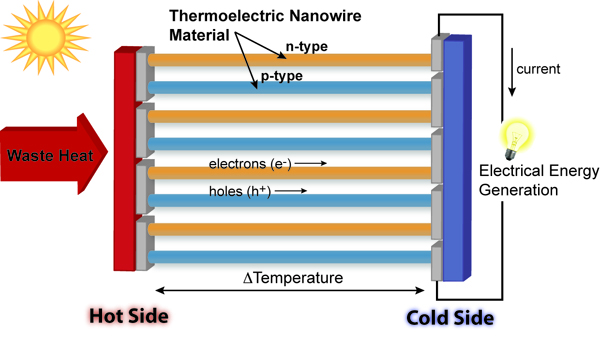Solar Heat To Electric Power Generation
Heat produced by infrared photons emitted by the sun is currently not harvested and represents lost energy. Additionally, heat from car braking and the engine is not being efficiently utilized. Thermoelectric materials provide a way to directly convert heat to electrical power, but currently this conversion process is inefficient. Researchers in the CfSE are looking at new thermoelectric materials as well as doing fundamental studies on the thermoelectric properties of these materials.Nanowire Thermoelectric Materials
The figure-of-merit for state-of-the-art thermoelectric materials, ZT, has been stuck at 1.0 - 1.2 since the discovery of Bi2Te3 fifty years ago. According to theory, nanowires may exhibit ZT values considerably larger than 1.0. However, few experimental measurements of ZT for nanowires have been reported, due to the difficulty of the measurements. One experimental problem is that nanowires must be extremely long in addition to having nanoscopic width to be made into a device and have good thermoelectric properties, respectively.


Center Funded Publications
